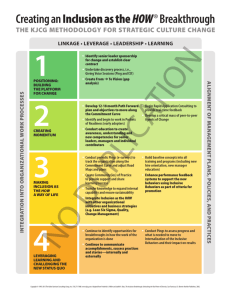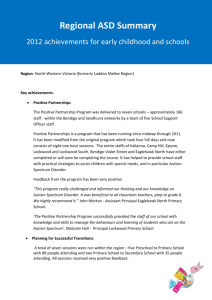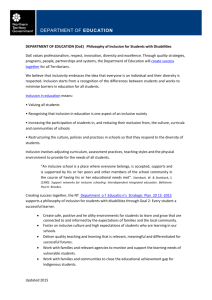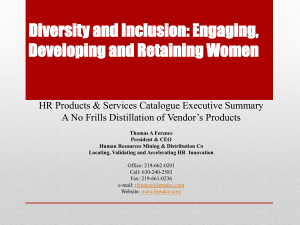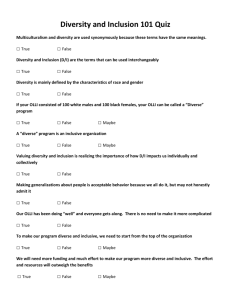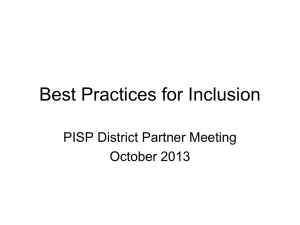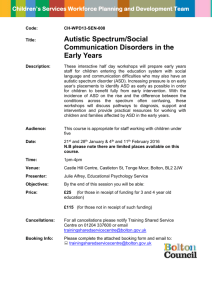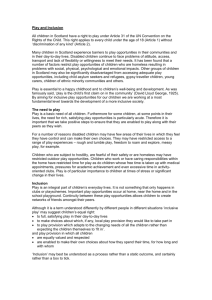HERE - Libraries and Autism: We`re Connected
advertisement
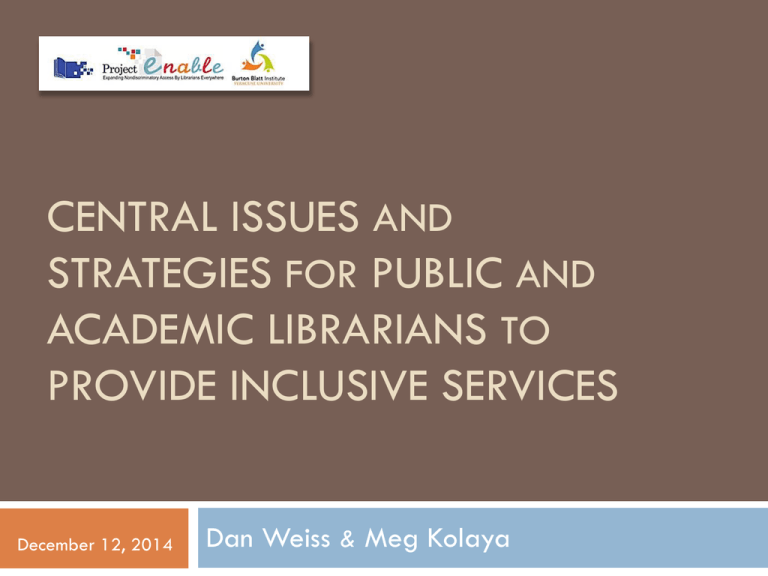
CENTRAL ISSUES AND STRATEGIES FOR PUBLIC AND ACADEMIC LIBRARIANS TO PROVIDE INCLUSIVE SERVICES December 12, 2014 Dan Weiss & Meg Kolaya Central Issues and Strategies for Public and Academic Librarians to Provide Inclusive Services Libraries and Autism: We’re Connected Applying Universal Design principles and Universal Design for Learning strategies to library programs, spaces and services Serving patrons with ASD and their families Evaluating Library accessibility Customer Service Attitudes and perceptions Limits in providing inclusive service Universal Access / Design Products, built environments, services Usable to the greatest extent by everyone – or anyone – regardless of age, ability, etc. Physical approaches: curb cuts, ramps, lever handles not knobs, Barrier free: removing barriers to access & participation Flexible, varied approaches to serve all differences, needs, etc. 7 Principals of Universal Design for Instruction At the Center on Universal Design at North Carolina State University a group of architects, product designers, engineers, and environmental design researchers established seven principles of universal design to provide guidance in the design of environments and products. Equitable use. The design is useful and marketable to people with diverse abilities. Example: A professor's website is designed so that it is accessible to everyone, including students who are blind and using speech-to-text software. Flexibility in use. The design accommodates a wide range of individual preferences and abilities. Example: A museum, visited as a field trip for a course, allows each student to choose to read or listen to a description of the contents of display cases. Simple and intuitive. Use of the design is easy to understand, regardless of the user's experience, knowledge, language skills, or current concentration level. Example: Control buttons on science equipment are labeled with text and symbols that are simple and intuitive to understand. Perceptible information. The design communicates necessary information effectively to the user, regardless of ambient conditions or the user's sensory abilities. Example: A video presentation projected in a course includes captions. Tolerance for error. The design minimizes hazards and the adverse consequences of accidental or unintended actions. Example: Educational software provides guidance and background information when the student makes an inappropriate response. Low physical effort. The design can be used efficiently and comfortably, and with a minimum of fatigue. Example: Doors to a lecture hall open automatically for people with a wide variety of physical characteristics. Size and space for approach and use. Appropriate size and space is provided for approach, reach, manipulation, and use regardless of the user's body size, posture, or mobility. Example: A flexible science lab Challenges Serving Patrons with ASD Lack of knowledge about ASD – public and staff Behavior is communication Inclusion – modeling by staff Americans with Disabilities Act (ADA) Evaluating Your Library Services Physical Space Programming Customer Service What is it? Why should you care Common sense, the Golden Rule Proscribed by management Our video and website www.librariesandautism.org Basic customer services skills and techniques provided can serve as universal models for best-practices library service to all members of the public. Attitudes and Perceptions The right frame of mind – how do you look at things Person-first language Being empathetic and proactive in the moment “Nothing about us without us” Limits to inclusion Where to draw the accommodation line? Rules and policy Inclusion vs. Special Resources www.autismandlibraries.org This is My Library Non-verbal communication guide Including Families of Children with Special Needs by Carrie Banks Planning for Library Services to People with Disabilities by Rhea Rubin National Center on Universal Design for Learning National Center on Accessible Instruction Materials aim.cast.org/learn/historyarchive/backgroundpapers/promise_of_udl/what_udl - .VIH_KNalYUY Disability is Natural www.udlcenter.org/implementation/examples www.disabilityisnatural.com/ The Wakanheza Project (wa-’khan-ja) www.co.ramsey.mn.us/ph/cp/wakanheza.htm

